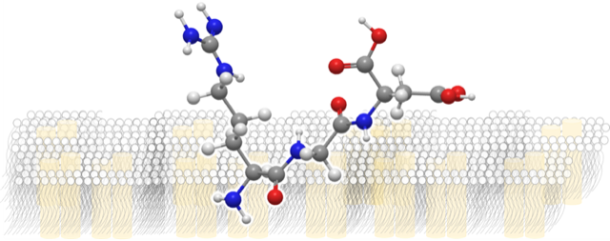Welcome to Iris Biotech
For better service please confirm your country and language we detected.

For better service please confirm your country and language we detected.

Thank you very much for your interest in our products. All prices listed on our website are ex-works, Germany, and may attract customs duties when imported.
You may/will be contacted by the shipping company for additional documentation that may be required by the US Customs for clearance.
We offer you the convenience of buying through a local partner, Peptide Solutions LLC who can import the shipment as well as prepay the customs duties and brokerage on your behalf and provide the convenience of a domestic sale.
Continue to Iris Biotech GmbHSend request to US distributorPublished on 22/06/2020

Integrins are a family of structurally, immunochemically, and functionally related heterodimeric cell-surface receptors mediating adhesion between cells and the extracellular matrix (ECM) by binding to ligands with an exposed arginine-glycine-aspartate (RGD) sequence. Integrins also stimulate intracellular signaling and gene expression involved in cell growth, migration, and survival. If not properly process-regulated, integrins are found to be related to diseases such as thrombosis, inflammation, and cancer. Specifically, the RGD motif is recognized by integrins ανβ3 and ανβ5 which are overexpressed in many tumors and thus have become promising diagnostic indicators and therapeutic targets.
Iris Biotech offers a variety of cyclic RGD peptides which are conformationally rigid and typically display enhanced metabolic stability over their linear counterparts.
One example possessing very high affinity for the αvβ3 integrin is the dimeric peptide E[c(RGDfK)]2 (LS-3980), that consists of two cyclic pentapeptides c(RGDfK) linked by a glutamic acid residue. Thus, this dimeric RGD peptide shows high tumor targeting properties. It serves as an integrin inhibitor and gained interest in non-small-cell lung cancer treatment. It can be easily conjugated to drug molecules, chelators, or dyes. In this context, please see LS-3950 (ICG-E[c(RGDfK)]2), the ICG conjugate of LS-3980 combining the fluorescent properties of ICG and the favorable αvβ3-binding capabilities of LS-3980 allowing tumor targeting.
Cyclo-[RGDfK(TPP)] (LS-3920) serves as cyclic RGD peptide for the preparation of multicellular tumor spheroids (MTS) – 3D in vitro models that mimic the in vivo tumor environment.
➔ In case you don’t find your desired derivative in our Webshop, send your inquiry to our Custom Synthesis Service!
References: